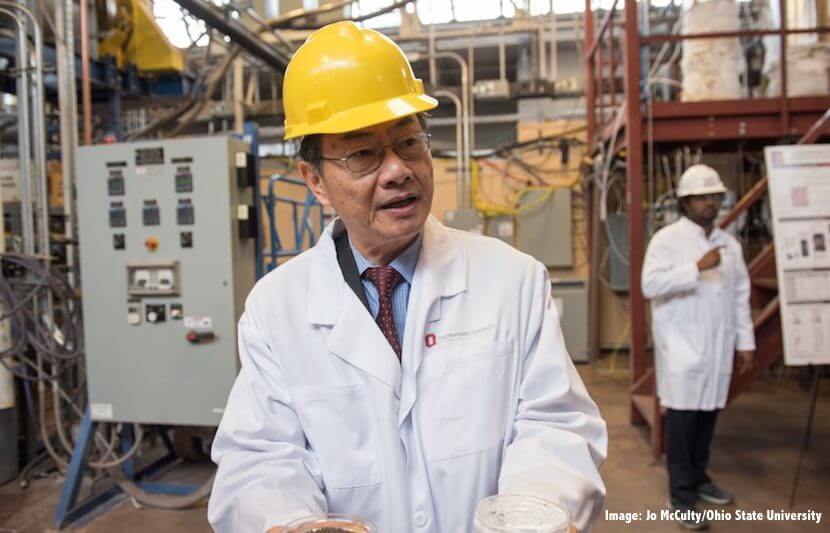Engineers at The Ohio State University have developed a technology that can convert fossil fuels and biomass into useful products, such as gasoline and electricity, without emitting carbon dioxide into the air.
They believe this will be an important step to allow industries to create clean energy until renewable energy, such as solar and wind power, become more widely available and affordable to use.
The technology uses a process called chemical looping and works by using tiny metal oxide particles that transport oxygen into high-pressure reactors. As these particles cycle through the system, they essentially burn fossil fuels and biomass without the presence of oxygen in the air, causing a chemical reaction that does not emit carbon dioxide.
Dr. Liang-Shih Fan, Distinguished University Professor in Chemical and Biomolecular Engineering at OSU, has been working on this research for over 40 years.
Five years ago, Fan and his team demonstrated a portion of this technology, which they called coal-direct chemical looping (CDCL) combustion, by successfully releasing energy from coal while preventing over 99 percent of carbon dioxide emissions from entering the air. Their key discovery was the result of using iron oxide particles, which supplied the oxygen for chemical combustion in a moving bed reactor and, after combustion, took back the oxygen from the air to begin the cycle again.
The study is published in the journal Energy & Environmental Science.
While this discovery was a breakthrough at the time, the remaining challenge was to keep the particles from wearing out so the technology may be useful for commercial operation.
At that point, CDLC lasted through only 100 cycles for more than eight days of continuous use. However, the researchers have since developed a formulation that lasts through 3000 cycles, or more than eight months of continuous use.
“We have screened elements from the periodic table and are able to identify elements that have high reactivity and physical strengths,” Fan said. “It is an elaborate process in element screening. We anticipate this particle to have a life cycle beyond 3000 cycles as demonstrated.”
This study is also published in the journal Energy & Environmental Science.
So far, this has been the longest lifetime ever reported for the oxygen carrier. The researchers’ next step is to test the carrier in an integrated coal-fired chemical looping process.
Additionally, Fan and his team have discovered a method to use chemical looping to produce “syngas,” or synthetic gas, at half the costs of current technology. Syngas is a mixture containing predominantly carbon dioxide and oxygen.
The method, which has been patented, actually uses carbon dioxide to create a number of other useful products, including ammonia, plastics, and carbon fibers, instead of having it scrubbed from power plant exhaust to avoid it entering the atmosphere as a greenhouse gas.
Each of these developments has brought the technology significantly closer to commercialization.
The university has already began collaborating with industries such as the Linde Group, a company that provides hydrogen and synthesis gas supply and plants, and The Babcock & Wilcox Company (B&W), which produces clean energy technologies for power markets.
“When chemical looping technology is commercially developed, it will have significant impact on fossil fuel conversion in terms of process economics, energy conversion efficiency, pollution abatement strategy and variability in product formation,” said Fan.



